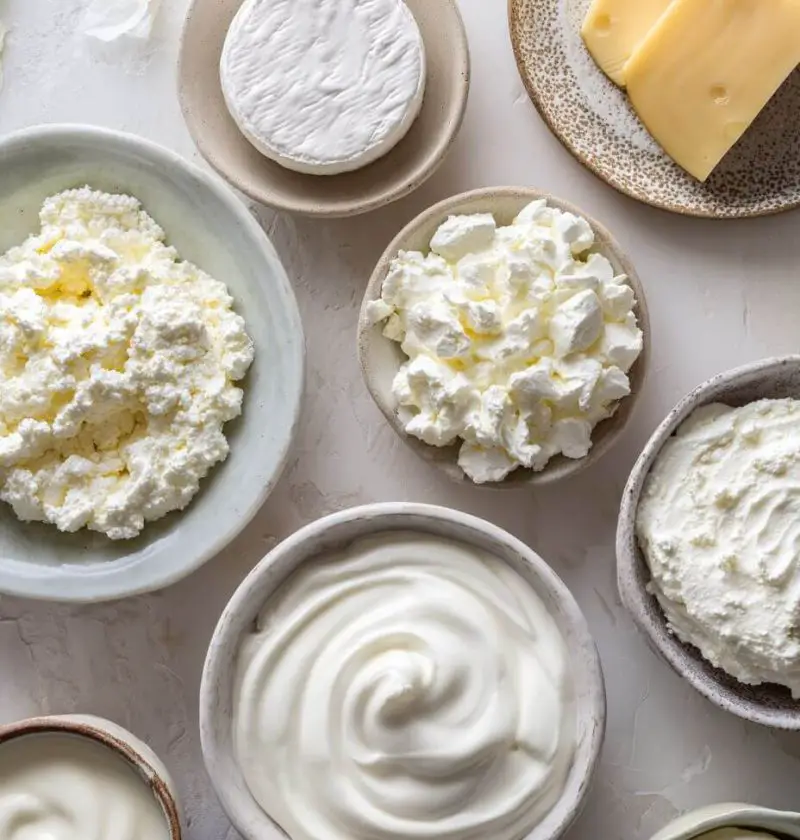Let me tell you something from the heart of my kitchen.
Years ago, in a flurry of meal prepping and freezer-stuffing on a chilly Sunday afternoon, I thought I was doing myself a favor by freezing just about everything in sight—including a tub of sour cream and my favorite whipped topping. What could go wrong, right?
Well, let’s just say my Tuesday baked potato and Wednesday dessert were not the comforting meals I had planned. The sour cream was watery, and the whipped cream? Flat as a pancake.
Freezing can be a lifesaver for lots of foods, but dairy? Oh, dairy is a whole different story. Some things just don’t take kindly to the cold, bless their hearts.
So if you’re anything like me—always looking to save time, cut waste, and plan ahead—here’s a list of 10 dairy products I highly recommend keeping out of the freezer. Your tastebuds (and future self) will thank you.
Why You’ll Want to Keep These Out of the Icebox
-
Texture changes… and not in a good way
-
Separation of fat and water—hello, weird lumps
-
Off flavors that make everything taste stale
-
Lost creaminess in recipes that need smooth perfection
-
Not worth the freezer space or the disappointment
What Not to Freeze (and What Happens If You Do)
1. Cream Cheese: Crumbly, Not Creamy
Cream cheese is that smooth operator we rely on for spreads, dips, and cheesecakes. But once frozen? It gets grainy, crumbly, and loses all that rich spreadability. It’s still edible, sure—but that creamy luxury? Gone.
Tip: Only freeze it if you’re tossing it into a casserole or something where texture doesn’t matter.
2. Sour Cream: Separation City
This one breaks my heart because I adore sour cream on nachos and baked potatoes. But once frozen, it splits like a bad breakup. The fat and water go their separate ways, and what’s left is watery and curdled.
Alternative: Greek yogurt holds up a smidge better if you’re using it in cooked dishes.
3. Soft Cheeses: R.I.P. Creamy Texture
Think Brie, Camembert, goat cheese—those fancy, melt-in-your-mouth kinds. Freezing ruins their soft interiors and turns them into crumbly shadows of their former selves.
Use Them Fresh: Especially for charcuterie boards or appetizers. Save the frozen cheese experiment for shredded mozzarella, not your triple crème.
4. Yogurt: Watery & Weird
Yogurt develops a watery layer after freezing that’s not only off-putting but tough to stir back into creaminess. It’s okay for smoothies (if texture doesn’t bother you), but for breakfast with berries? No thanks.
5. Milk: Not What You Remember
Yes, you can freeze milk, but it changes. Thawed milk tends to separate and may taste faintly… stale. Great for baking, maybe, but not so much for your morning latte.
Pro Tip: If you must freeze it, shake it well after thawing, and use it quickly.
Save This Recipe
6. Whipped Cream: Flat & Sad
Frozen whipped cream deflates. Literally. The airy fluffiness collapses into a dense, lifeless blob. It doesn’t whip back to life either—no matter how much you pray.
Make Fresh: Honestly, homemade whipped cream takes minutes, and tastes a world better.
7. Cottage Cheese: Lumpy & Leaky
This one becomes a science experiment. The curds firm up, the liquid separates, and what you get after thawing is something I wouldn’t even put in a lasagna. Not unless it’s an emergency.
8. Ricotta: No More Creamy Goodness
Ricotta is delicate and creamy—perfect for stuffed shells or cannoli. After freezing, it turns grainy and dry, and there’s no bringing it back. Like trying to fluff a pancake.
Try This Instead: Mix fresh ricotta with a little mascarpone for extra creaminess in cooked dishes.
9. Buttermilk: Lumpy and Bumpy
If you’ve ever tried thawing buttermilk, you know what I mean. It turns into a separated mess of watery liquid and unappetizing clumps. It’ll work in pancakes or muffins, but for sauces or dressings? Hard pass.
10. Custard-Based Desserts: Ruined Textures
Crème brûlée, flan, pastry cream—these are delicate desserts meant to be savored fresh. Freezing wrecks their silky texture and often leads to weeping (the custard… and maybe you).
Bonus: Cream-Based Sauces
Alfredo, béchamel, or any dreamy white sauce is a risky freezer resident. Fat separates, the sauce breaks, and reheating usually doesn’t restore that luscious, cling-to-your-pasta texture. You’re better off making a quick fresh batch.
Wait, Can I Freeze Any Dairy?
Sure, some dairy products are freezer champs. Think:
-
Shredded hard cheese (like cheddar or mozzarella)
-
Butter (yes, really!)
-
Ice cream (naturally)
But for the rest? It’s all about knowing what to skip to save yourself from mealtime letdowns.
Friendly Storage Tips (Because We’ve All Been There)
-
Label & date everything if you do freeze it—memory is not what it used to be, right?
-
Use freezer-safe containers to avoid freezer burn.
-
Thaw slowly in the fridge instead of the counter—it helps maintain what little texture survives.
Let’s Chat in the Comments
Have you ever frozen cottage cheese by mistake? Or had your whipped cream go flat in the freezer? (You’re not alone, trust me.) I’d love to hear your funny freezer flops or your tips on what actually does freeze well.
Let’s learn from each other—because while the freezer is a blessing, it’s got its limits. Especially when dairy’s involved.
And if you’re ever unsure, just picture thawed sour cream on a taco. That should be reason enough to keep it chilled—but not frozen.

